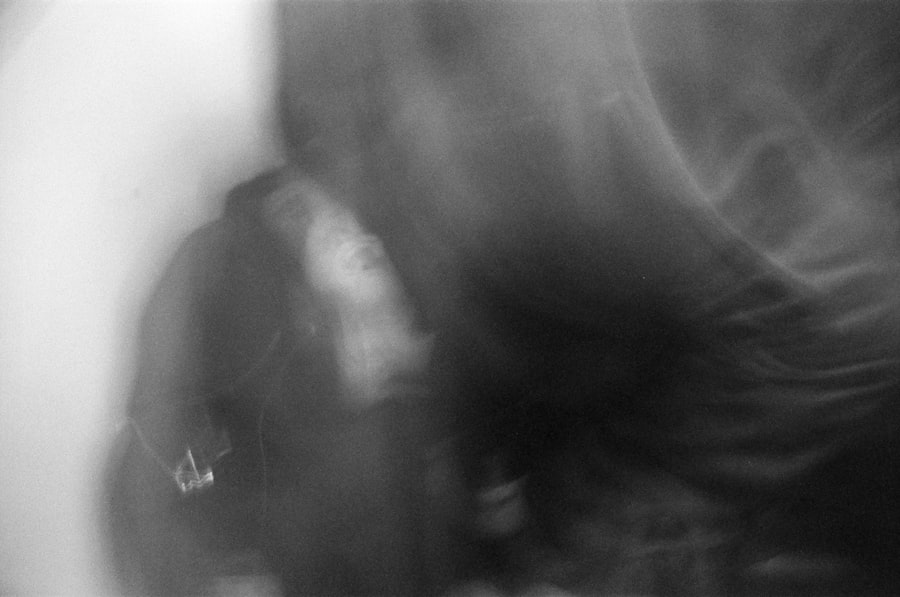Depersonalization Derealization Disorder (DDD) is a complex mental health condition characterized by persistent feelings of detachment from oneself or one’s surroundings. You may find yourself feeling as though you are observing your life from outside your body, or that the world around you seems unreal or distorted. This experience can be disorienting and frightening, often leading to significant distress and impairment in daily functioning.
DDD is not merely a fleeting sensation; it is a chronic condition that can affect your emotional well-being and your ability to engage with the world. The disorder often emerges in response to trauma, stress, or anxiety, but it can also occur without any identifiable trigger. You might feel as if you are living in a dream or that your thoughts and feelings are not your own.
This disconnection can lead to difficulties in forming relationships and maintaining a sense of identity. Understanding DDD is crucial for those who experience it, as well as for their loved ones, as it can help foster empathy and support during challenging times.
Key Takeaways
- Depersonalization Derealization Disorder (DDD) is a mental health condition characterized by feeling detached from oneself and the world, often leading to a sense of unreality.
- Autism Spectrum Disorder (ASD) is a developmental disorder that affects communication, behavior, and social interaction, and is often diagnosed in early childhood.
- Symptoms of DDD include feeling disconnected from one’s body, emotions, or thoughts, and experiencing a distorted sense of time and space.
- Symptoms of ASD may include difficulty with social interactions, repetitive behaviors, and challenges with verbal and nonverbal communication.
- There is a link between DDD and ASD, with individuals with ASD being more likely to experience symptoms of depersonalization and derealization.
What is Autism Spectrum Disorder (ASD)?
Autism Spectrum Disorder (ASD) is a neurodevelopmental condition that affects how you perceive and interact with the world. It encompasses a wide range of symptoms and behaviors, which is why it is referred to as a “spectrum.” Individuals with ASD may experience challenges in social communication, exhibit repetitive behaviors, and have specific interests or routines that they adhere to rigidly. The way you process sensory information can also be affected, leading to heightened sensitivity or a lack of response to sensory stimuli.
The onset of ASD typically occurs in early childhood, and while the exact cause remains unclear, a combination of genetic and environmental factors is believed to play a role. You may find that your experiences with ASD are unique, as the disorder manifests differently in each individual. Some may require significant support throughout their lives, while others may lead relatively independent lives.
Understanding the nuances of ASD is essential for fostering acceptance and providing appropriate support.
Symptoms and characteristics of Depersonalization Derealization Disorder

The symptoms of Depersonalization Derealization Disorder can be both perplexing and distressing. You might experience episodes where you feel detached from your thoughts, emotions, or sense of self, leading to a feeling of being an observer in your own life. This detachment can manifest as a sense of unreality regarding your surroundings, making familiar places feel foreign or strange.
These experiences can be triggered by stress, anxiety, or traumatic events, but they can also occur spontaneously without any clear cause. In addition to the core symptoms of depersonalization and derealization, individuals with DDD may also experience anxiety, depression, and difficulty concentrating. You might find it challenging to connect with others emotionally or feel as though you are going through the motions of life without truly engaging in it.
This emotional numbness can lead to feelings of isolation and loneliness, further exacerbating the distress associated with the disorder. Recognizing these symptoms is vital for seeking appropriate help and support.
Symptoms and characteristics of Autism Spectrum Disorder
| Symptoms and Characteristics of Autism Spectrum Disorder |
|---|
| Difficulty with social communication and interaction |
| Repetitive behaviors or restricted interests |
| Sensory sensitivities |
| Difficulty with verbal and nonverbal communication |
| Difficulty with understanding and interpreting social cues |
| Difficulty with emotional regulation |
Autism Spectrum Disorder presents a diverse array of symptoms that can vary widely from person to person. You may find that social communication poses significant challenges; for instance, understanding nonverbal cues or engaging in reciprocal conversations might be difficult. This can lead to misunderstandings in social situations and feelings of frustration or isolation.
Additionally, you may have specific interests that captivate your attention intensely, often leading to deep knowledge in those areas. Repetitive behaviors are another hallmark of ASD. You might engage in certain routines or rituals that provide comfort and predictability in an otherwise chaotic world.
Sensory sensitivities are also common; you may be overwhelmed by loud noises or bright lights, or conversely, you might seek out sensory experiences that others find uncomfortable.
The link between Depersonalization Derealization Disorder and Autism
Research has begun to explore the potential link between Depersonalization Derealization Disorder and Autism Spectrum Disorder. While these conditions are distinct, they share overlapping features that can complicate diagnosis and treatment. For instance, both disorders involve challenges related to perception and emotional regulation.
You may find that individuals with ASD are more susceptible to experiencing depersonalization or derealization due to heightened anxiety levels or sensory overload. Moreover, the social difficulties inherent in ASD can exacerbate feelings of detachment associated with DDD. When you struggle to connect with others or feel misunderstood, it can lead to an increased sense of isolation and disconnection from reality.
Understanding this link is crucial for mental health professionals as they work to provide comprehensive care for individuals who may be navigating both conditions simultaneously.
How Depersonalization Derealization Disorder can manifest in individuals with Autism

For individuals with Autism Spectrum Disorder, Depersonalization Derealization Disorder can manifest in unique ways that reflect their specific experiences and challenges. You might find that episodes of depersonalization occur more frequently during times of heightened stress or sensory overload. In these moments, the world may feel overwhelming, leading you to retreat into a state of detachment as a coping mechanism.
Additionally, the emotional numbness associated with DDD can further complicate the already intricate emotional landscape of someone with ASD. You may struggle to articulate your feelings or recognize them altogether, making it difficult to seek help or communicate your needs effectively. This interplay between the two disorders can create a cycle of distress that requires careful attention and tailored interventions.
Challenges in diagnosing Depersonalization Derealization Disorder in individuals with Autism
Diagnosing Depersonalization Derealization Disorder in individuals with Autism presents several challenges due to overlapping symptoms and behaviors. You may find that the social communication difficulties inherent in ASD make it hard to articulate experiences of depersonalization or derealization accurately. Mental health professionals may misinterpret these symptoms as part of the autism spectrum rather than recognizing them as distinct manifestations of DDD.
Furthermore, the presence of repetitive behaviors or intense interests may overshadow the signs of depersonalization or derealization during assessments. This can lead to underdiagnosis or misdiagnosis, leaving you without appropriate support for both conditions. It is essential for clinicians to adopt a comprehensive approach when evaluating individuals with ASD for DDD, ensuring that all aspects of their experiences are considered.
Treatment options for individuals with both Depersonalization Derealization Disorder and Autism
When it comes to treating individuals who experience both Depersonalization Derealization Disorder and Autism Spectrum Disorder, a multifaceted approach is often necessary. You may benefit from therapy modalities such as cognitive-behavioral therapy (CBT), which can help address negative thought patterns associated with DDD while also providing strategies for managing anxiety related to ASD. Additionally, mindfulness practices may offer tools for grounding yourself in the present moment, reducing feelings of detachment.
Medication may also play a role in treatment for some individuals. Antidepressants or anti-anxiety medications could help alleviate symptoms associated with both disorders, although careful monitoring is essential due to potential side effects. Collaborating with a team of healthcare professionals who understand both conditions can ensure that your treatment plan is tailored to your unique needs.
The impact of Depersonalization Derealization Disorder on individuals with Autism
The impact of Depersonalization Derealization Disorder on individuals with Autism can be profound and far-reaching. You may find that feelings of detachment hinder your ability to form meaningful connections with others, exacerbating feelings of loneliness and isolation that are already common among those on the autism spectrum. This emotional distance can lead to difficulties in maintaining relationships with family members and friends.
Moreover, the cognitive dissonance created by experiencing both disorders can lead to increased anxiety and frustration. You might struggle with understanding your own identity and how it relates to your experiences in the world around you. This internal conflict can create barriers to self-acceptance and hinder personal growth, making it essential for supportive environments that foster understanding and compassion.
Strategies for supporting individuals with both Depersonalization Derealization Disorder and Autism
Supporting individuals who experience both Depersonalization Derealization Disorder and Autism requires patience, empathy, and understanding. One effective strategy is creating a safe space where you feel comfortable expressing your thoughts and feelings without judgment. Encouraging open communication about your experiences can help bridge the gap between your internal world and those around you.
Additionally, implementing structured routines can provide a sense of stability amidst the chaos that both disorders may bring. Predictability can help reduce anxiety levels and create an environment where you feel more secure. Engaging in mindfulness practices together—such as deep breathing exercises or grounding techniques—can also be beneficial in managing episodes of depersonalization or derealization.
Future research and considerations for addressing the link between Depersonalization Derealization Disorder and Autism
As awareness grows regarding the intersection between Depersonalization Derealization Disorder and Autism Spectrum Disorder, future research will be crucial in developing effective interventions tailored to this unique population. You may hope for studies that explore the underlying mechanisms connecting these two conditions, which could lead to more accurate diagnostic criteria and treatment options. Moreover, increased training for mental health professionals on recognizing the signs of DDD within individuals on the autism spectrum will be essential for improving outcomes.
By fostering collaboration between researchers, clinicians, and advocacy groups, we can work towards creating a more inclusive understanding of mental health that addresses the complexities faced by those living with both disorders. Your experiences matter, and continued research will help ensure that individuals like you receive the support they need to thrive.
Depersonalization-derealization disorder (DPDR) and autism spectrum disorder (ASD) are both complex conditions that can significantly impact an individual’s perception of reality and social interactions. While DPDR is characterized by feelings of detachment from oneself and the surrounding environment, ASD involves challenges with social communication and repetitive behaviors. Understanding the intersection of these disorders can provide valuable insights into their overlapping symptoms and potential treatment approaches. For more information on the relationship between depersonalization-derealization disorder and autism, you can explore this com/sample-page/’>related article that delves into the nuances of these conditions and their implications for mental health professionals.
LEARN MORE About Unmasking the Mysteries Behind Depersonalization and Derealization
FAQs
What is depersonalization derealization disorder (DDD)?
Depersonalization derealization disorder (DDD) is a mental health condition characterized by a persistent or recurring feeling of being detached from one’s body (depersonalization) and/or feeling that the world around them is unreal or distorted (derealization).
What are the symptoms of depersonalization derealization disorder?
Symptoms of depersonalization derealization disorder may include feeling like an outside observer of one’s thoughts, feelings, and body, feeling like the world is unreal or distorted, emotional numbness, and a sense of detachment from oneself or one’s surroundings.
How is depersonalization derealization disorder diagnosed?
Diagnosis of depersonalization derealization disorder is typically based on a thorough psychiatric evaluation, including a discussion of symptoms, medical history, and ruling out other potential causes for the symptoms.
What is the relationship between depersonalization derealization disorder and autism?
There is some evidence to suggest that individuals with autism may be at a higher risk for experiencing depersonalization derealization disorder. Both conditions involve difficulties with processing and integrating sensory information, and individuals with autism may be more prone to experiencing dissociative symptoms.
How is depersonalization derealization disorder treated?
Treatment for depersonalization derealization disorder may include psychotherapy, medication, and stress management techniques. Cognitive-behavioral therapy (CBT) and mindfulness-based approaches have shown some effectiveness in helping individuals manage symptoms. It’s important for individuals with DDD to work with a mental health professional to develop a personalized treatment plan.




